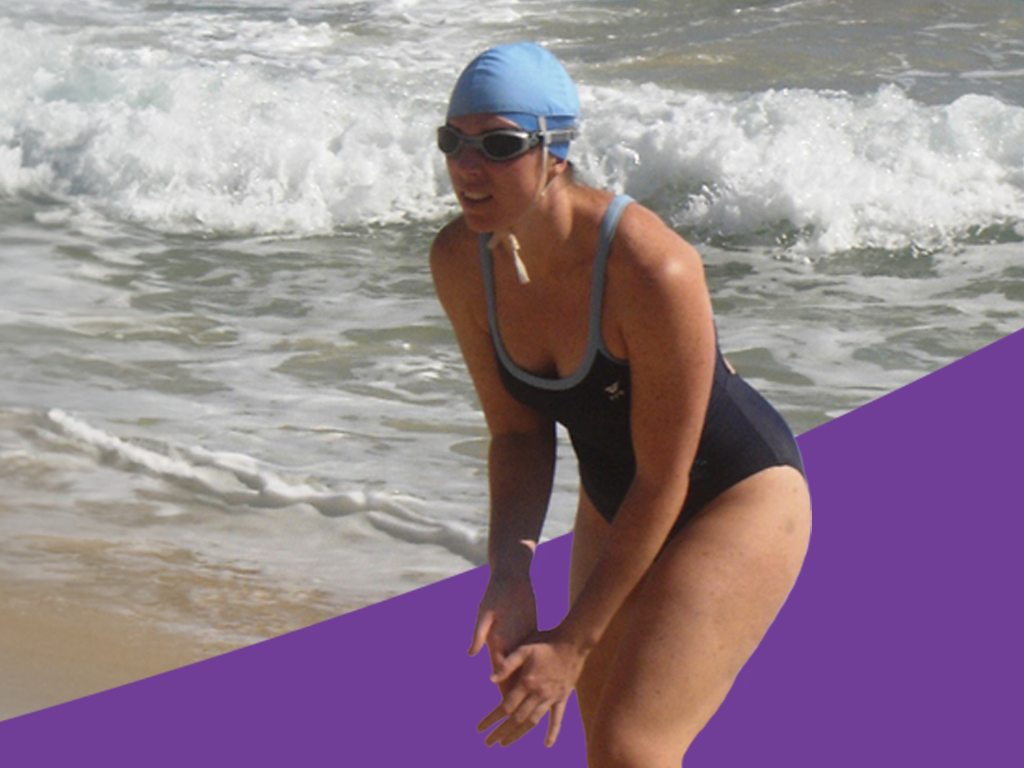Show Menu
Choose Your Location
You are now leaving the Viatris page for a Viatris affiliate site or third party site that is solely responsible for its content, including its compliance with guidelines applicable in certain geographies. Links to Viatris affiliate sites and third party sites are provided as a resource to our visitors and may not be governed by the same regulatory requirements applicable to this site and unaffiliated third party sites are subject to their own terms and data protection notices and practices. Moreover, if their third party site is subject to other country laws, regulatory requirements, data protection requirements or medical practices may differ between countries and the information provided therein may not be suitable for use in your country.

Patient Inspiration
By: Niki Kapsambelis
October 12, 2023
For 20 years, Georgina Davies has volunteered to patrol beaches as a member of Surf Life Saving Australia. Trained in rescue techniques, she keeps her skills sharp through competitions that test her ability to run, swim and ride the waves.
In February 2022, when she started to feel her energy levels flagging, she chalked it up to being a busy mother with a robust work schedule. But there were other signs that something more serious might be happening.
At one of her competitions, she felt unusually breathless.
“I did just think, ‘Oh, maybe I’m just a little bit unfit,’” recalled Georgina, who is Viatris’ Head of Business Excellence for Australia and New Zealand. “But actually, on reflection, I probably wasn’t unfit. I’d been doing the same amount of exercise as I normally would.”
She started to lose her breath even just walking up stairs. Little headaches began to crop up all the time. Her hair started falling out, and she developed restless legs at night.
“The thing that made me go and see my doctor was that after a conference, I had a funny sort of numb feeling in my face that wasn’t going away,” she said. “That’s when the blood tests revealed that I had got quite low iron and was, in fact, anemic at the time.”
Iron is an essential element that factors into oxygen transport, DNA synthesis and muscle metabolism. According to the World Health Organization, iron deficiency is the main cause of anemia, or a lower-than-normal number of healthy red blood cells, which is the most prevalent nutritional deficiency worldwide. It affects 33 % of non-pregnant women, 40% of pregnant women and 42% of children globally.
After discussing various options with her doctor, Georgina formed a treatment plan. Previously, she had stopped eating red meat for a few months, but she began eating it again along with leafy greens and switched to decaffeinated coffee, since caffeine can interfere with the body’s ability to absorb iron. Her doctor also recommended a supplement to boost her iron levels. Georgina went back to the doctor every month to check her iron levels, and after four weeks, they began to increase.
Although it would be three months before her levels reached the normal range, Georgina began to feel better at the four-week mark.
“I definitely felt much more energy,” she said, adding that the headaches and restless legs disappeared.
Now that she is back to normal, she continues to monitor her diet and takes an iron supplement when she feels fatigued. She also visits her doctor every six months.
“Sometimes, I’ll feel a bit tired, so I’ll go to the doctor and ask to get my iron levels checked – and actually, it’s just that I’m tired,” she said. “But at least I’m aware now of the symptoms and also how to maintain a healthy lifestyle to avoid iron deficiency.”